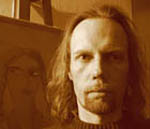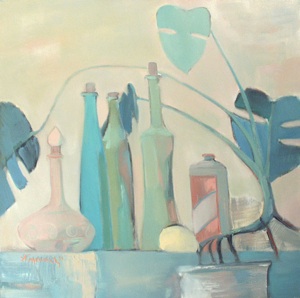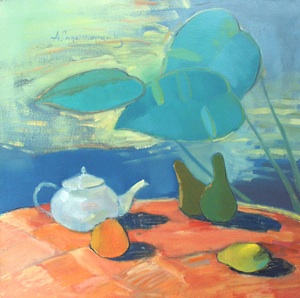Aleksander Sidelnikov, artist

Aleksandr Sidelnikov is an artist by the grace of God.
He was trained in the studio of Motovilov - a gifted teacher who did not impose his system on his pupils but gave them a free hand and independence, encouraging their individuality in stead of ruining it altogether. Sidelnikov has been taking part in exhibitions since 1990. Subtle exquisiteness and spell of his paintings attracted and keep attracting quite a number of experts and admirers of painting. His works of art can be found in many corporate and private collections in Russia, Austria, Germany, USA, Israel, and Japan. Even though his success is really deserved the artist does not stop at what has been accomplished, following one and the same clichй one and for all. By the start of the 21st century his tactful painting based on subtle tone relationships and undertint reflexes has suddenly gained the power and strength of colour, confidence, and artistic freedom. What happened is a miraculous metamorphosis as though jazz compositions suddenly joined silvery sounds of a reed pipe.
His artistic interests are quite broad. Here are Gauguin, Cezanne, Modigliani as well as Pavel Kuznetsov, Aleksandr Shevchenko. Learning from great masters he does not reduce himself to a gutless imitator. The artist is thinking over painting classics, creating his own picture of the world.
Sidelnikov works in various genres. In a manner of speaking this is a portrait, still live, and landscape. The portrait generally has no portrait traits and it is man at large. Alternatively “still life” is sometimes inherent in landscape while the landscape is shown as the still life (fish are if they were boats and boats are as if they were fish). The “Pears” are quite expressive. Here the artist shows a gift of monumentalist. The space of the still life, brief in colour, keeps moving and pulsating. The background reminds the heavens while the “table”, the earth. The plastic, absolutely live pears cannot be “still nature”, they are rather an anthropomorphous sculpture. A multiple repetition of one and the same form (nevertheless painted differently) brings in into the composition the rhythm and plastic expressiveness. An emotional effect of the colour gains symbolic sounding.
The landscape manifests the romanticism of the artist, his sorrow for an unrealised dream about the splendid harmonious world, distant countries. Here are almost unreal, allegedly dreamt peopleless cities reminding either Venice or Amsterdam, and almost animated boats and ships alone or in a company waiting ashore. The artist dares to “cut off” the objects with the canvas edge to underscore infinity of the space. The space is disconnected, sometimes at a planet scale, emphasised by a spherical line of the horizon (“Three Trees”).
The figure compositions and ironic “Portraits” reveal an artist-man of our sophisticated time. The contrasting (almost dissonance) relations between the emerald-blue tone of greenness and sea (background) and terracotta-red nudes impart vague anxiety and tension. We hardly need to say that it is talented, confident and properly arranged in colours. The artist has managed to find a dynamic trade-off between cold and warm tints, a line and spot.
From time to time, in order to highlight volatility and nerve pulsation of life the artist’s main concern is with the texture – in addition to brushstrokes placed either smoothly, pastously, or dynamically he applies harrowing.
The artist is in the prime life. And it is much hoped that with time Sidelnikov’s paintings will occupy a reputable place in the museums .
Mlada Khomutova






